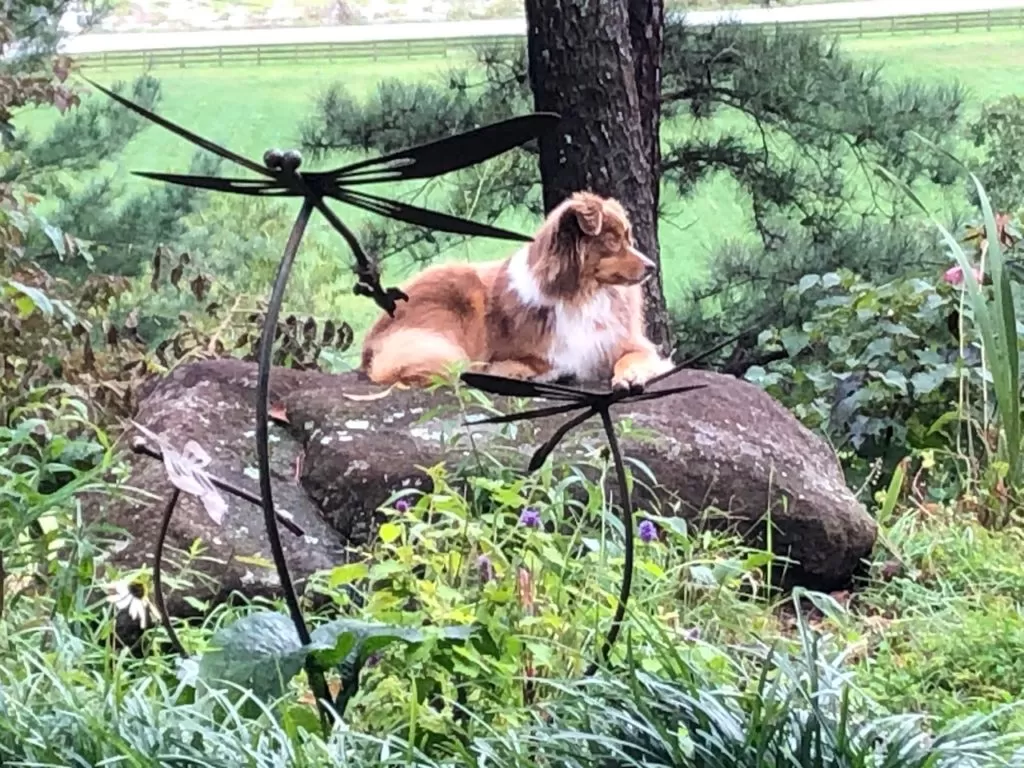Arts and Crafts Therapy
Elbert Hubbard once advised: “Work your grief into art — and it is gone.”
I modified it into my own motto: “Work your frustration into a project — and it is gone.”
Like yourself, the Covid-19 restrictions and fears have frustrated me, especially as we have been trying to determine how to best hold the 34th National Arts and Crafts Conference. So, this week I have taken my own advice and started a new outdoor therapy project.
When I was growing up, getting in trouble often meant being assigned a section of our large vegetable garden to pull weeds. By late summer, the sprawling tomato plants invariably held more than a few rotten tomatoes that the blue jays had ruined or had been blistered by the hot Midwest sun. The strawberry runners made finding the base of the stubborn crabgrass sprouts nearly impossible for my small, tender fingers to grasp, and the potato plants had long since wilted into a tangle of nettles, awaiting my father and his four-pronged pitchfork to carefully raise them out of their earthy nest.
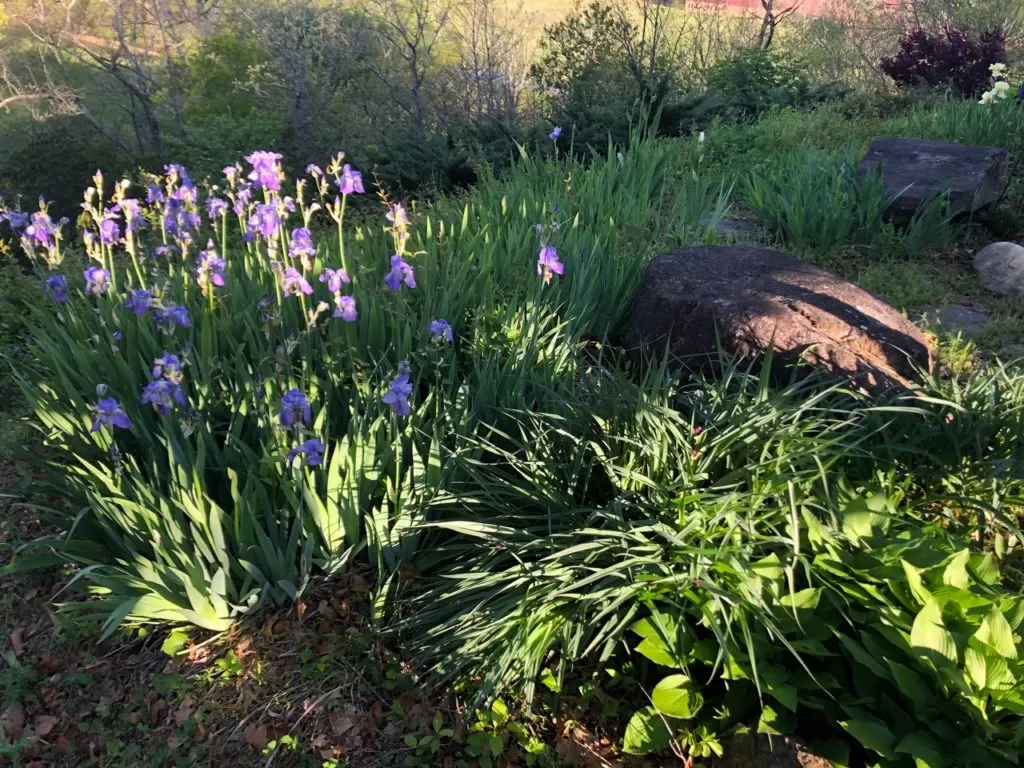
And so, I now have no desire to grow any of my own vegetables, but I do enjoy providing Leigh Ann with the hardscaping she needs around her flower beds and shrubs. Two years ago, we had a wonderful bed of spring irises, but they have since been invaded by a triple threat: English ivy, poison ivy, and honeysuckle. Their vines made it difficult for her to remove the fallen oak leaves and pine needles which were suffocating and rotting the iris bulbs, so we either had to surrender or fight back.
And we do not surrender.
The solution is coming in the form of a concrete block retaining wall that will serve two purposes: keep the invaders out, and enable us to add more topsoil to the crumbling hillside beneath our iris bed.
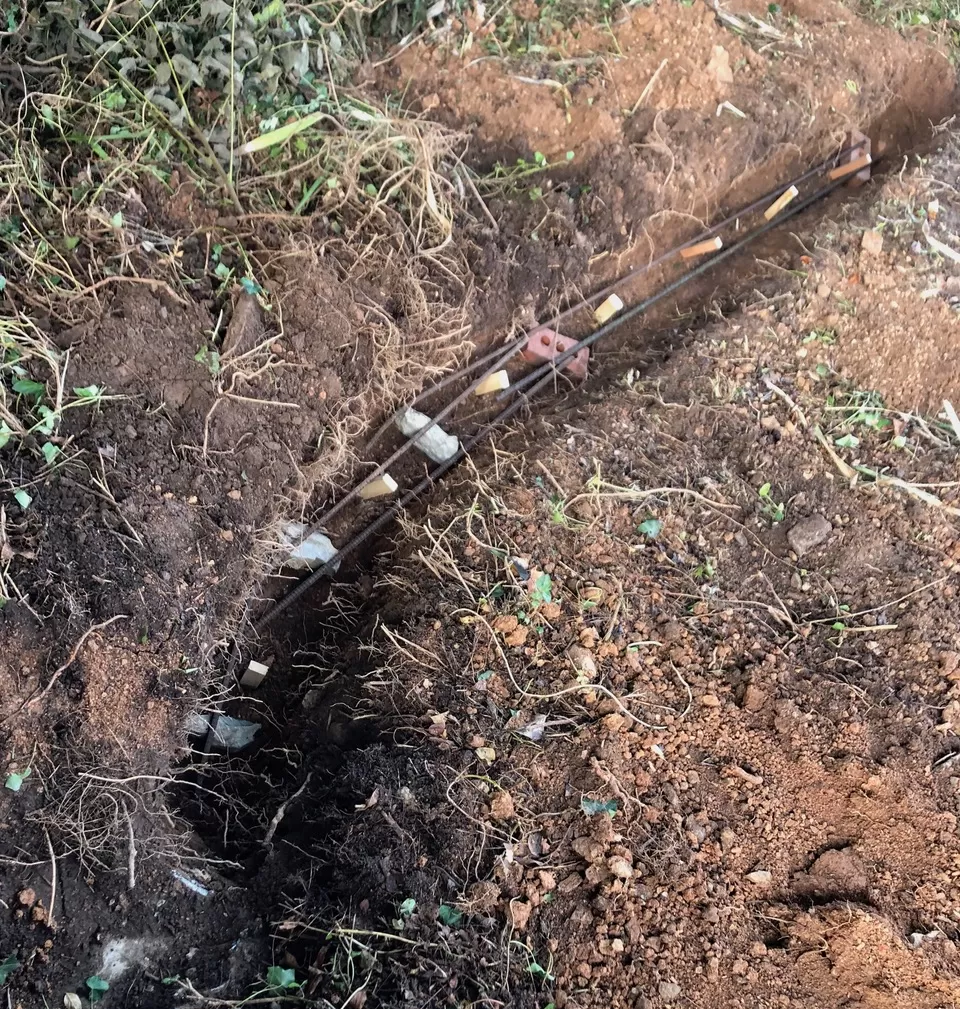
The first step was the most challenging, as I had to chop, dig and slice my way through a tangle of vines above ground and an equally as invasive network of roots underground, not to mention the occasional native rock waiting to jar me and my spade. But I persevered, and in a few hour’s time had dug a crude but effective trench, into which I laid two lengths of steel reinforcing bar before covering them with four inches of concrete I mixed one 50-pound bag at a time.
On top of my concrete footing I placed a row of plain concrete blocks. Into each one I inserted a two-foot length of vertical rebar, which later will enable me to bond the second and third courses with the footer and my first course. Just for added insurance, I filled several cells in the concrete blocks with wet concrete to form vertical concrete piers attached to the footing. I gave all of this overnight to harden, while I made a trip back into Asheville to get another load of concrete blocks.
Then the rain started falling.
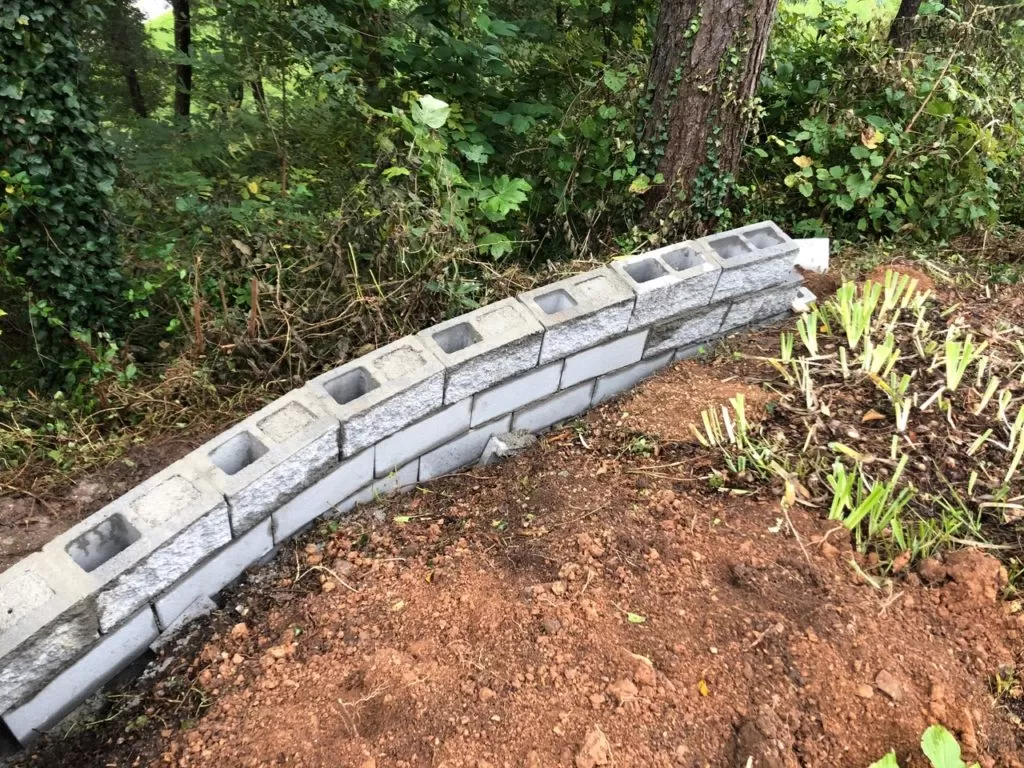
I’m certainly not adverse to getting wet, but the rain made standing on the hillside mat of vines and loose dirt I had dug out nearly impossible, especially while trying to position a twenty-pound concrete block atop the previous row. I retreated for the afternoon, but will be back to continue with my therapy project.
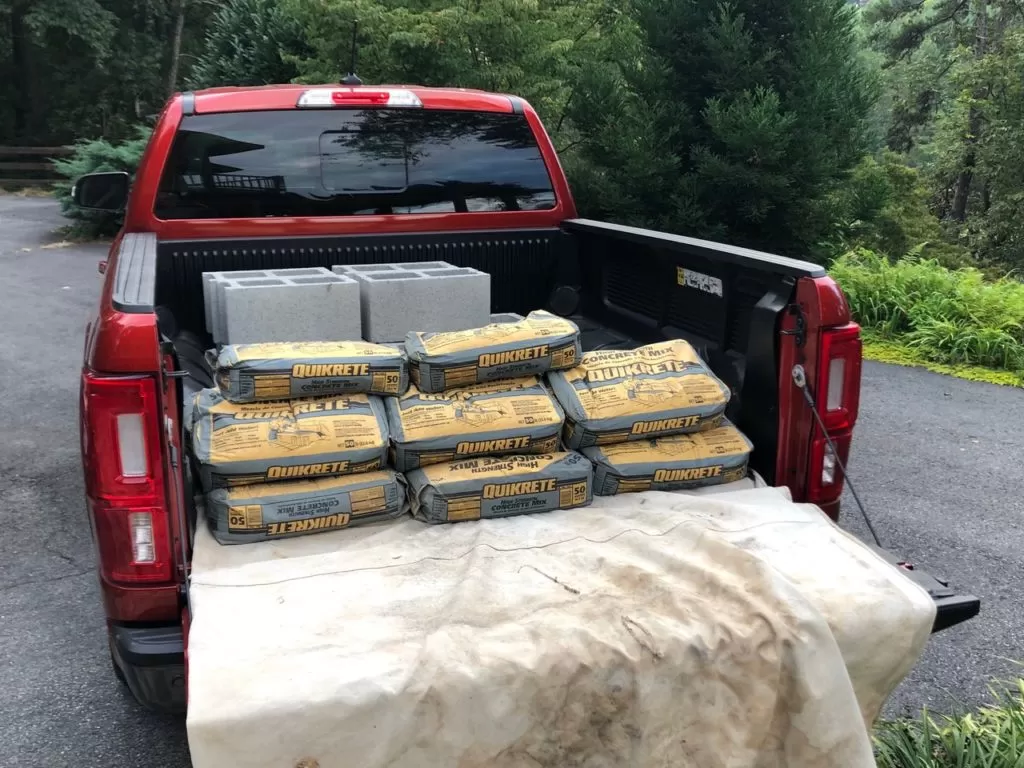
Until next week,
“Life without industry is guilt; industry without art is brutality.” – Elbert Hubbard
Bruce
PS – Of course, I had a supervisor keeping an eye on me from his perch atop one of our boulders.
